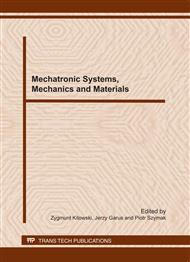p.250
p.261
p.269
p.281
p.288
p.297
p.303
p.313
p.323
Ship Shock Modeling of Underwater Explosion
Abstract:
Ship shock tests have been conducted for shock qualification of hull integrity and proper operation systems and subsystems. The ship shock trial identifies design and construction and it also validates shock hardening criteria. The main problem is that ship shock trials are costly. Numerical modeling and simulation, using FEM, may provide information to look into the details of fluid model, dynamic characteristics of ship hull and its internal component. The ship shock modeling and simulation has been performed and the predicted results were compared with ship shock test data made into sea trials. The preliminary studies of shock analysis approach is presented and the important parameters are discussed.
Info:
Periodical:
Pages:
288-296
Citation:
Online since:
November 2011
Authors:
Keywords:
Price:
Сopyright:
© 2012 Trans Tech Publications Ltd. All Rights Reserved
Share:
Citation:


